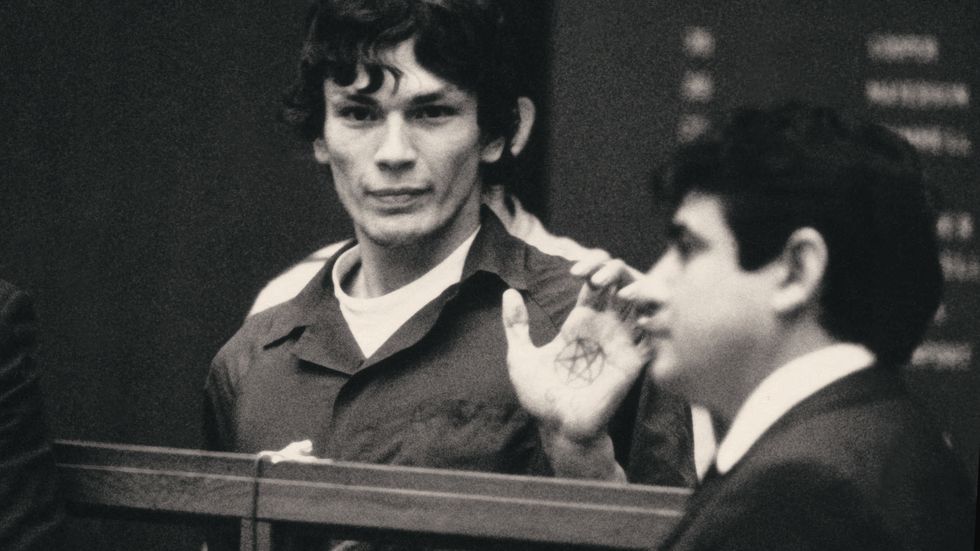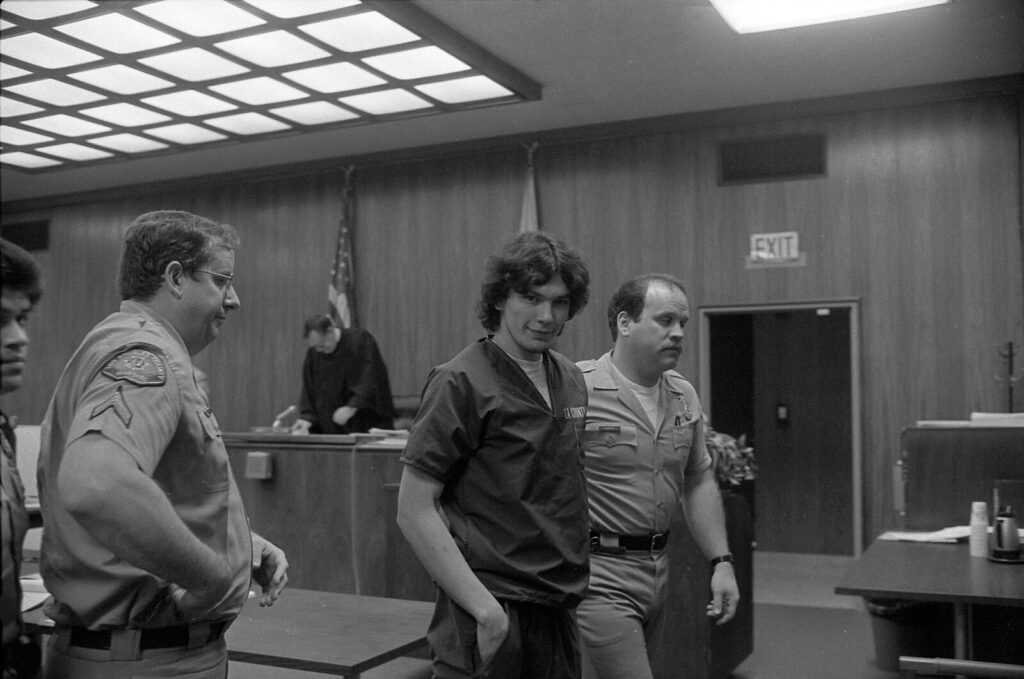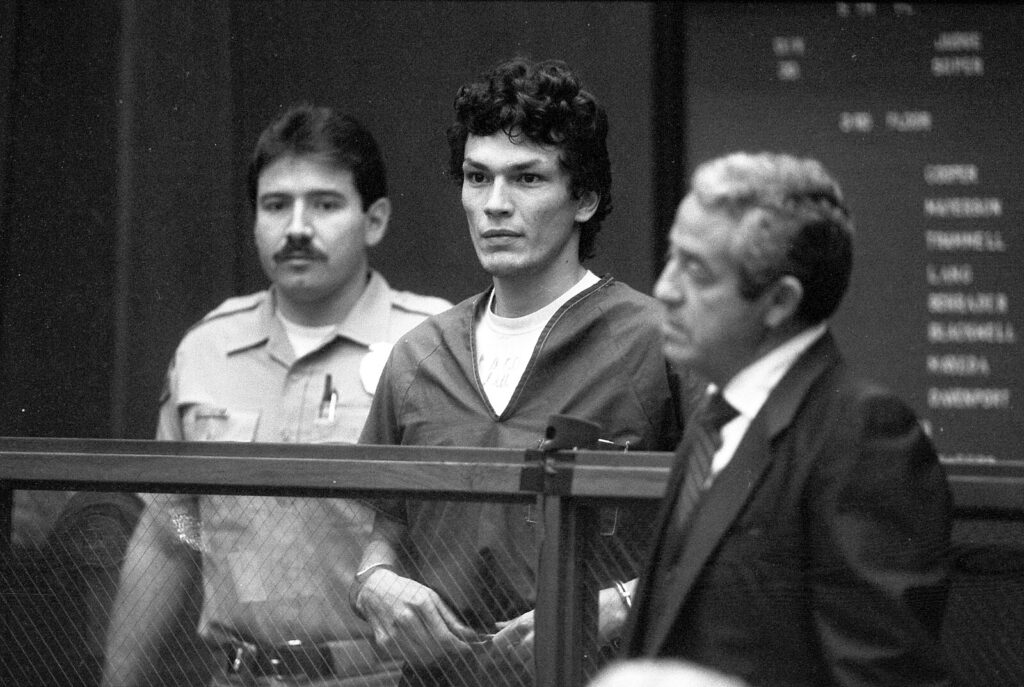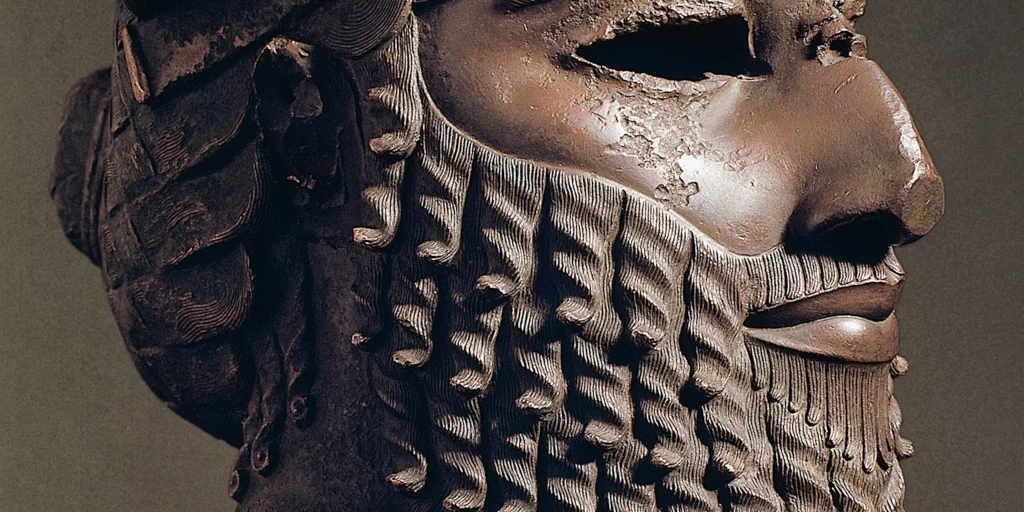In the mid-1980s, the city of Los Angeles was gripped by fear as a shadowy figure prowled the streets, leaving a trail of brutality and horror in his wake. This sinister presence was none other than Richard Ramirez, infamously known as the Night Stalker.
The saga of Ramirez’s crimes remains etched in the dark annals of true crime, a chilling tale of a man whose rampage of violence and terror left an indelible mark on the history of criminal infamy.

Early Life and Disturbing Beginnings
Richard Ramirez was born on February 29, 1960, in El Paso, Texas into a troubled family life. Ramirez’s father, a former police officer, was an angry, abusive man, which resulted in violence against Ramirez throughout his early life.
The injuries inflicted by his father around age 6 would permanently alter Ramirez’s life. Psychologists believe the brain injuries he sustained at this age that caused epileptic seizures in Ramirez also altered his psyche and turned him into a psychopath.
By age 10 Ramirez was drinking and smoking marijuana and in early puberty became abnormally physically and sexually aggressive.
At age 12, Ramirez found himself under the wing of his older cousin Miguel who had recently returned from fighting in the Vietnam War. While the pair would smoke together, Miguel would recall the heinous things he had done to Vietnamese women during the war and would show Ramirez photographic evidence.
Ramirez became fascinated with Miguel’s stories. They fueled his sadistic thoughts, dovetailing with his rising interest in Satanism and all things macabre.
In 1973, Ramirez witnessed Miguel shoot his wife in the face during a dispute. He claimed that this situation intrigued him more than disturbed him.
Miguel would eventually be found not guilty due to insanity. This would be attributed to the post-traumatic stress disorder of his service, and would be held in a psychiatric hospital for a few years.
During this time Ramirez became more withdrawn and moody, compounded by entering puberty. He began expanding his drug use to include LSD and cocaine, which would become his drug of choice, and his sexual criminality rapidly evolved.
His first sexual crimes appeared during his teenage years, as he became a voyeur with Miguel and his brother-in-law. They would make nightly excursions to spy on women through their windows.
Ramirez began escalating when he got a job in a hotel, which allowed him access to more people in their private spaces. He molested two children in the elevator and was eventually caught raping a man’s wife when the husband returned to the room.
After the husband beat Ramirez in the room, the couple refused to return to Texas to testify, so Ramirez was never charged. Shortly after, Ramirez would graduate high school and move to Los Angeles where he would escalate his crimes even further.
The Night Stalker Emerges
In the summer of 1984, Los Angeles became the hunting ground for Ramirez, who became a serial killer. His modus operandi was to break into people’s homes in the dead of night, after which he would sexually assault, kill, or rob them; sometimes all three.
One particular pattern he repeated was targeting couples specifically. He broke into their homes under cover of night, shooting the husband, then sexually assaulting the wife, although this was not his only demographic.
Alongside his inclusion of Satanic imagery in his crime scenes, his cocktail of criminal activity created an atmosphere of terror that permeated the city. This only worsened as Ramirez continued to evade law enforcement.
Ramirez would kill over 20 victims in Los Angeles and San Francisco, terrifying the residents of both cities.

The Capture and Trial
The turning point in the Night Stalker saga came in August 1985. Ramirez’s last victims, Inez Harrison and Bill Carns, were able to provide police with a description of Ramirez after he told them to inform law enforcement that the Night Stalker had been there.
Police had lifted a partial fingerprint from a prior crime scene and used a new system to identify Ramirez, and Harrison’s story corroborated their conclusion. They released his identity to the media and asked the public to be on alert for Ramirez.
Ramirez was quickly recognized in a convenience store by his mugshot. He was beaten by a crowd of vigilantes so badly that he was almost relieved to be taken into custody.
The subsequent trial was a spectacle that garnered significant media attention. As a televised event, Ramirez had the chance to show that he was proud of his actions.
Even as lawyers laid out the gruesome details of his crimes and survivors pled their case, Ramirez smiled. At the end of his trial, in 1989, Ramirez was convicted of 13 counts of murder, 5 counts of attempted murder, 11 counts of sexual assault, and 14 counts of burglary, among other charges.
The gravity of his crimes was reflected in his multiple death sentences.

The Dark Charisma and Satanic Influences
What set Richard Ramirez apart from other serial killers was his dark charisma and the apparent enjoyment he derived from the chaos he sowed. During the trial, Ramirez flaunted satanic symbols in the courtroom, including one on the palm of his hand, which earned him a cult following that supported his actions.
While some became enamored with him, his flagrant use of Satanic symbols contributed to the rest of the public’s perception of the occult as a criminal ideology and lifestyle.
One terrifying aspect of the case was that one of the jurors failed to show up in the courtroom one day. It was discovered they had been killed, further mystifying his Satanic connections and the fear of the Night Stalker.
It was later discovered that she had been killed by her boyfriend, who then used the same weapon to kill himself. But the damage was done.
The judge, jury, and public all feared that Ramirez had somehow orchestrated the death from within prison, and the replacement juror was too afraid to return home for the extent of the trial.

The Psychological Profile: Unraveling the Mind of a Killer
Richard Ramirez’s case has become a subject of intense interest for criminal psychologists seeking to understand the mind of a killer. His troubled upbringing, exposure to violence, and descent into criminality paint a complex picture of a man shaped by a multitude of factors.
The debate between nature and nurture in Ramirez’s life is still up for debate. Although Ramirez grew up in an abusive home and spent significant time with a violent cousin, many others have experienced similar upbringings and been disgusted by the behavior.
His descent into criminal behavior was not guaranteed, and it is impossible to extrapolate what sets Ramirez apart.
The Night Stalker’s crimes also defy easy categorization. Typically law enforcement can build a profile that helps identify unknown criminals, to narrow down the suspect list.
However, Ramirez’s victims varied widely in age, gender, and socio-economic background. The closest thing to a pattern is that he targeted a few couples and that his victims were mostly women.
This diversity challenged prevailing notions about serial killers who often adhere to specific patterns and made it nearly impossible to locate Ramirez. It was not until he left a survivor that he was able to be caught, with her description corroborating a fingerprint police had found at one crime scene.
Ramirez’s indiscriminate brutality left an indelible mark on criminal profiling. It prompted a reevaluation of methodologies used to understand and predict the actions of violent offenders.
The Death of the Night Stalker: His Final Years in Prison
Ramirez remained on death row from 1989 until 2013, when he finally died from cancer. During the nearly 25-year sentence, he maintained a cult following and received hundreds of letters from fans.
In 1996 he married Doreen Lioy, a woman who had been writing him letters for nearly a decade. She repeatedly said that she would kill herself when Ramirez died.
Although she regularly visited him in prison after their marriage, she cut ties when evidence emerged in 2006 that Ramirez had assaulted and murdered a child in 1984, leaving him to die alone in 2013.

Conclusion: The Echoes of Darkness
As society grapples with the haunting legacy of the Night Stalker, the lessons learned from this dark chapter continue to inform our understanding of criminal behavior, the complexities of human psychology, and the importance of collective vigilance in the face of evil.
The echoes of Richard Ramirez’s darkness serve as a haunting reminder that, even in the most seemingly ordinary corners of life, the potential for unspeakable horrors may lurk. It challenges us to remain vigilant and resilient in the pursuit of justice and the preservation of the safety and well-being of our communities.
References
Learish, Jessica. “Richard Ramirez: The story, the evidence, the Night Stalker.” CBS News, May 21, 2021. https://www.cbsnews.com/pictures/richard-ramirez-night-stalker-murders/.
“Richard Ramirez: The Night Stalker.” Crime Museum, 2022. https://www.crimemuseum.org/crime-library/serial-killers/richard-ramirez/.

